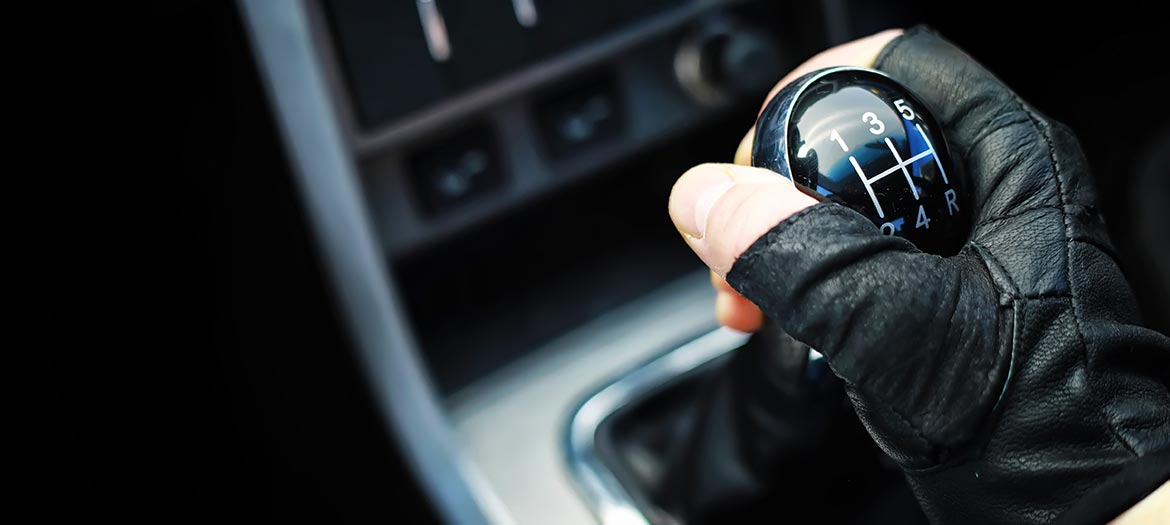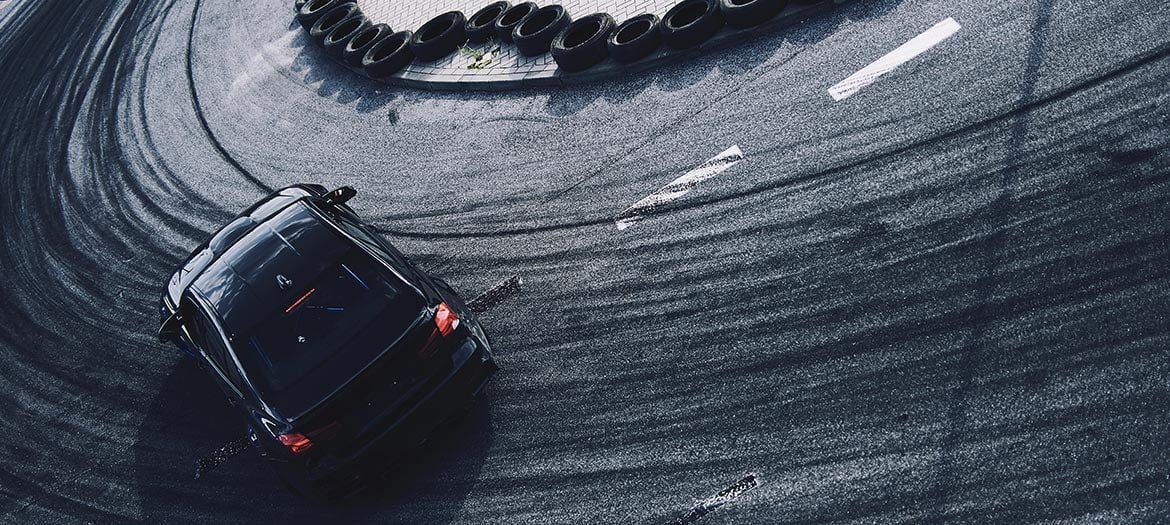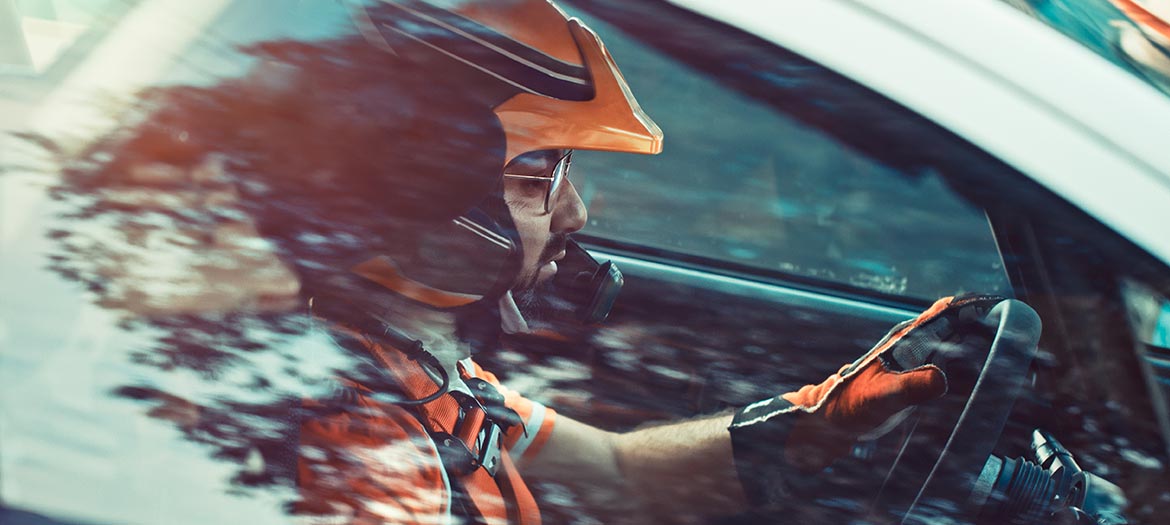Tuning the transmission
The transmission system, to put it simply, has the role to transmit the engine power to the drive wheels, employing an adequate torque conversion, in order to make the most of the given engine power in any driving condition.
If we have already tuned the engine, the next logical step is to make sure the newly obtained horsepower is transferred to the wheels appropriately. In order to achieve that, we need to replace the factory gear shift, which can no longer support the increase in horsepower and torque, with a so called “racing” gear shift.

If engine power is improved significantly, a factory gear shift is no longer an appropriate solution.
What mistakes do we usually make when driving a manual?
Although transmission tuning is primarily tied to the racing segment of the automotive industry, the truth is that any enormous boost in engine power (for example, 150 hp to 300 hp) requires improvements in the transmission system. Failing to do so could cause the gears, the drive shaft or the clutch to break, as well as many other unwanted wrecks that are not just costly, but also pose a serious threat to safety. If, however, we talk about “light” tuning of the engine, it’s possible to keep the factory gear shift.
Enthusiasts who have their cars tuned for private purposes should consult their tuner who will calculate if tuning the transmission is something worthwhile.
This article will tell you more about improving the basic elements of transmission: the differential - final transmission, the gearbox with the gearing, the drive shaft and the clutch (basket and clutch plate).
The Differential
Perhaps the easiest way to understand the importance of the differentials is to try and visualize the wheels of a vehicle entering a curve. As the vehicle turns, the inner wheel is closer to the center of the circle, thus travelling a shorter distance than the outer wheel. If there was no differential to allow the wheels to rotate at different speeds, it would be virtually impossible to control a turning vehicle and save the tires from excessive wear.
How to store tires without damaging them?

A differential facilitates controlling a vehicle in a curve.
The differential is a mechanism whose most important feature is the axle ratio, ie. the ratio between the so called pinion and crown wheel (or the ring gear). For example, if we say that the axle ratio is 4:1, it means that the pinion will rotate 4 times for each turn of the crown wheel. If we need a faster gear shift, we will opt for a smaller coefficient (less than 4).
The basis of a differential can be a simple transmission that coordinates the left and right side of the gear shift, i.e. the left and right side axle shafts by means of a so called “driven bevel” or “spider” gear. It can also be a more complex system like the so called “limited-slip differential” which, in case one wheel begins to slip, sends torque to the other wheel. By doing so, it helps the car exit a turn with greater force. A limited-slip differential is not something you’d normally find in serially produced cars. It comes in different variations, from the (friction-based) plate variant which is also the most affordable option, to the ones with locking gears that fall under the pricier category. Which type will your tuner opt for will depend on the needs and the financial construction.
*A pair of gears that allows different distance between the left and the right wheel.
The Gear Box
The gear box contains a primary and secondary set of gears. The number of gear pairs tells us how many driving gears there are. For example, if there are 5 gear pairs, it means the car has 5 forward gear ratios plus one for reversing. Factory gear shifts have inclined teeth to make the connection smooth and less audible. However, the force transmitted during the mating of inclined gear teeth follows a tangential direction, away from the center of the rotation. When a tuned engine runs at high RPM, this puts enormous pressure on the gear box walls which is not designed for factory gear shifts. This is why a tuned transmission requires installing a different kind of gears with flat teeth.
Flat teeth gears do not produce tangential forces. Since there is no resistance, this kind of gear shift practically sends greater force to the wheels.
Another important characteristic for flat teeth gears is that you don’t need a clutch to shift gears (the clutch is only used to put the car in motion), which makes changing gears much faster.

Flat gear teeth enable faster change of gear.
When buying or producing a gear box, one must pay attention to the gearing. One of the standards for racing says that the first gear should be relatively “long”, so that the car could achieve the desired speed at the very start. Once the car reaches the desired speed, every next gear range is set to 800 to 1,200 revolutions per gear. For example, when the first gear reaches 10,000 RPM and we shift to the second gear, it will drop at about 9,000 RPM. We hold the gas pedal again to reach 10,000 RPM, and when we shift to the third gear, it will drop again to 9,000 RPM. The same principle is applied until the very last gear. However, bear in mind that the overall performance on track will also depend on the engine power and torque.
The Drive Shaft
Another important part segment of transmission tuning that requires special attention is the drive shaft. More powerful engines put greater torsional force on the shafts. In this case, factory shafts could break under pressure. Transmission tuning requires higher-quality shafts and joints, made of more durable materials.
The Clutch
The clutch is an element that transmits the linear movement of the cylinders -
transformed into rotational movement via the crankshaft, which we discussed in “Cylinder block tuning”- to the rotational movement of the wheels. A racing clutch is necessary to transfer the power of a tuned engine via the differentials and the gear box to the surface. This is a clutch with greater pressure performance and high-friction clutch plates, called sintered clutch plates.
Some vehicles that boast immense engine power and torque require a so called “dual clutch”.
Our next article will be dedicated to another element that plays a vital role in contact with the surface, so fasten your seat belt and stay tuned!


